I. Introduction
The solar inverter is the unsung hero of the solar photovoltaic (PV) system. They play a critical role in converting the energy from the sun into usable electricity. In this article, we’ll look at solar inverters and discuss why they matter in the year 2023. Recent solar technology advances have improved efficiency, durability, and intelligence. Such features appeared unattainable before. These advances have lowered the cost of solar electricity, enabling a greener future. The solar energy generation industry is fast increasing.
Therefore, choosing the correct solar inverter is vital to PV system performance.Due to their crucial role in transforming solar energy into useable power, solar inverters will be the focus of this blog post. Your inverter will greatly impact your system’s efficiency, reliability, and Return on Investment.
II. Understanding Solar Inverters
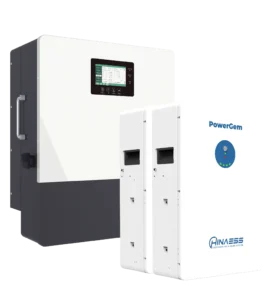
At its most basic level, a solar inverter’s job is to convert the DC energy produced by solar panels into the AC electricity. AC power is used in homes and businesses to run electronics like refrigerators, televisions, and lights. Solar panels provide DC energy, while most household appliances and the electrical grid rely on AC.
III. Types of Solar Inverters and Their Roles
There are various varieties of solar inverters available, each tailored to a distinct set of circumstances:
1. String Inverters
These solar inverters are the most popular choice for homes and small businesses alike. They perform well under consistent lighting conditions and don’t break the bank.
2. Microinverters
These are small electronic devices that are mounted to solar panels to boost their efficiency. Additionally they allow for panel-level monitoring. This is particularly useful in systems with partial shadowing or multiple orientations.
3. Power Optimizers
Power optimizers are often employed in tandem with string inverters. This helps improve solar panel efficiency under adverse circumstances. Prior to being sent to the string inverter, the DC output of each panel is maximised.
4. Hybrid Inverters
Hybrid inverters are adaptable, and they were made specifically for households that use energy storage. During blackouts, they can handle both solar electricity and energy stored in batteries.
5. Smart Inverters
These inverters can communicate with the grid and perform various grid support duties. In order to maintain grid stability, they may modify their output and offer continuous monitoring data.
IV. Criteria for Evaluating Solar Inverters
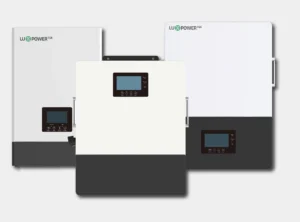
Key considerations for solar inverter evaluations include:
1. Efficiency Rates
How well a solar inverter converts DC power from your panels into usable AC power for your house or company is a function of its efficiency. Generally, you should look for inverters with excellent efficiency ratings. This will help you get the most out of your energy output and minimise your energy losses,
2. Durability
Due to their often-exposed exterior locations, solar inverters must be very sturdy. You should look for an inverter that is constructed from durable materials. Also, the design should be able to tolerate extremes in temperature and humidity as well as dust and dirt. Think on the following elements of longevity:
· Environmental Rating
For outdoor installations, select inverters that have better environmental ratings (IP65 or IP66). They are more suitable due to their enhanced resistance against dust and moisture.
· Operating Temperature Range
Monitor the temperature range of the invertor to make sure it covers the expected temperatures at installation site. There are inverters that can function well even in very hot or cold environments.
3. Warranty
The length of the inverter’s warranty is an important consideration. With a longer warranty term, you can be certain that any potential issues will be taken care of, and your finances will be safe. Learn the specifics of the guarantee, including its duration.
4. Compatibility
Verify that the inverter you choose is suitable for your solar panel setup and overall system layout. The inverter and panels compatibility is crucial for achieving peak system performance.
5. Monitoring Capabilities
Modern inverters have monitoring functions that provide real-time data on the status of your system. These features aid in the early detection of problems. Therefore, this facilitates preventative maintenance and boosts the system’s overall performance.
6. Financial aspects
Check the inverter’s initial price tag against your available funds. Though expensive initially, high-quality inverters may save money in the long term. They do so by increasing energy output and dependability. Think about the inverter’s impact on your solar PV system’s return on investment (ROI) as a whole.
V. Best Solar Inverters 2023
Here, you’ll find a compiled list of 2023’s top solar inverters, hand-picked by our experts. We will provide an in-depth explanation, technical information, and insights into each inverter. This information will help you choose the best inverter for your solar system.
1. LXP Hybrid 3-6k Solar Hybrid Inverter
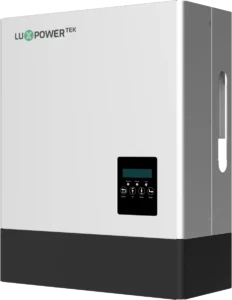
Description:Advanced technology combines solar and battery inverters in the LXP Hybrid 3-6k Solar Hybrid Inverter. This integration improves the effectiveness and adaptability of your solar energy system. Consequently, it is a great option for both households and businesses.
Specifications:
- Power Output Range: 3 kW to 6 kW
- Efficiency: High efficiency ensures effective energy conversion from solar panels.
- Battery Compatibility: Compatible with various battery types for energy storage.
- Grid Interaction: Supports on-grid and off-grid operation, ensuring power during outages.
- Monitoring: Real-time monitoring via a user-friendly interface.
- Remote Control: Some models offer remote management through mobile apps or online platforms.
Advantages:
- Energy Independence: Store excess daytime energy and use it at night or during outages, reducing grid dependence.
- Optimized Energy Use: Manages energy flow intelligently. Also lowers energy bills by prioritizing cost-effective solar or stored energy.
- Backup Power: Provides reliable backup during grid outages.
- Flexible Installation: Easy integration into existing solar systems.
- Sustainability: Reduces reliance on fossil fuels, contributing to a greener energy solution.
For more details, please visit https://luxpowertek.com/lxp-hybrid-3-6k
2. SolarEdge HD-Wave Inverter

Description: The SolarEdge HD-Wave inverter is known for its small size and decent appearance. These features make it appropriate for installations in both residential and commercial settings. Modern HD-Wave technology is included, which improves efficiency and dependability. Specifications:
- Efficiency: Up to 99%
- Power Output Range: 3 kW to 10 kW
- Warranty: Up to 25 years
- Monitoring: Real-time panel-level monitoring
Advantages:
- High efficiency and performance even in low-light conditions.
- Panel-level monitoring for improved maintenance and issue detection.
- Lightweight and easy to install.
3. Enphase IQ8 Microinverter
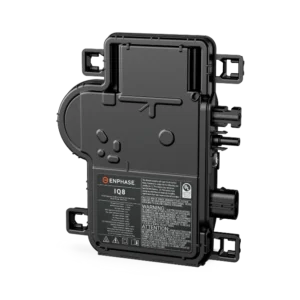
Description:Known for exceptional performance and dependability. These are the major features of the Enphase IQ 8 Microinverter, a panel-level inverter. It incorporates cutting-edge technology for increased energy output. It is designed to function flawlessly with Enphase’s IQ line of solar panels.
Specifications:
- Efficiency: Up to 97.3%
- Power Output Range: Varies based on panel configuration
- Warranty: Up to 25 years
- Monitoring: Real-time panel-level monitoring
Advantages:
- Maximizes energy production by managing each panel individually.
- Resilient to shading and module-level issues.
- Long warranty for peace of mind.
4. SMA Sunny Tripower CORE1
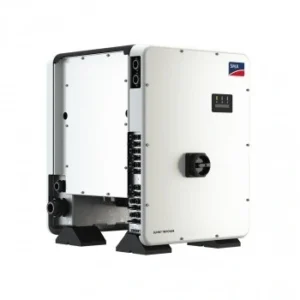
Description:
Innovative string inverter for industrial and utility use is the SMA Sunny Tripower CORE1. It is efficient and reliable, and its modular architecture makes it easy to set up and keep up with.
Specifications:
- Efficiency: Up to 98.8%
- Power Output Range: 50 kW to 110 kW
- Warranty: Up to 20 years
- Monitoring: Comprehensive monitoring and data analysis
Advantages:
- Scalable design for large installations.
- High efficiency and performance in demanding conditions.
- Advanced monitoring and data capabilities.
5. Huawei SUN2000-90KTL-H1
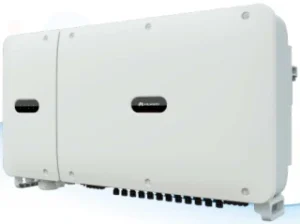
Description:It is a grid-tied inverter designed for large commercial and utility-scale installations. It offers high efficiency, advanced safety features, and smart grid support capabilities. Specifications:
- Efficiency: Up to 99%
- Power Output Range: 36 kW to 90 kW
- Warranty: Up to 20 years
- Monitoring: Real-time monitoring and remote control
Advantages:
- High efficiency and performance.
- Advanced safety features, including AFCI and PID recovery.
- Smart grid support for stable grid integration.
| Inverter | Power Output | Efficiency | Battery Compatibility | Grid Interaction | Monitoring | Remote Control | Rating (1-5) |
| SolarEdge HD-Wave Inverter | 3 kW to 10 kW | Up to 99% | Compatible with batteries | On-grid | Real-time monitoring | Yes | 4.3 |
| Enphase IQ 8 Microinverter | Varies | Up to 97.3% | Compatible with batteries | On-grid | Real-time monitoring | Yes | 4.4 |
| SMA Sunny Tripower CORE1 | 50 kW to 110 kW | Up to 98.8% | Compatible with batteries | On-grid | Comprehensive monitoring | Yes | 4.2 |
| Huawei SUN2000-90KTL-H1 | 36 kW to 90 kW | Up to 99% | Compatible with batteries | On-grid | Real-time monitoring | Yes | 4.1 |
| LXP Hybrid 3-6k Solar Hybrid Inverter | 3 kW to 6 kW | High efficiency | Compatible with batteries | On-grid/off-grid | Real-time monitoring | Some models offer remote control | 4.7 |
Conclusion
A wide variety of household, commercial, and utility-scale solar inverters are now available. Thanks to significant developments in the field in 2023. Installation size, budget, and long-term objectives be considered when choosing a solar inverter. You should also talk to solar experts who can provide you advice that’s specific to your situation. Whether you go with the LXP Hybrid 3-6k Solar Hybrid Inverter, or some other top-rated inverter, you’ll still be working towards the same end. The ultimate goal is to use the sun’s clean, renewable energy to lessen your impact on the planet and create a better, more sustainable future.

